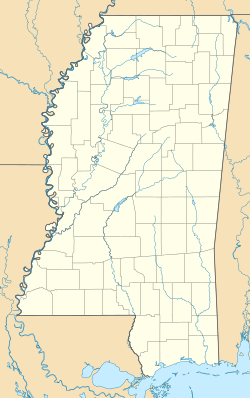Farish Street Neighborhood Historic District facts for kids
Quick facts for kids |
|
|
Farish Street Neighborhood Historic District
|
|
 |
|
| Location | Roughly bounded by Amite, Mill, Fortification and Lamar Sts., Jackson, Mississippi |
|---|---|
| Area | 125 acres (51 ha) |
| Architectural style | Bungalow/craftsman, Art Deco, Queen Anne |
| NRHP reference No. | 80002245 |
| Added to NRHP | March 13, 1980 |
The Farish Street Neighborhood Historic District is a special old neighborhood in Jackson, Mississippi. For many years, it was a busy center for businesses owned by Black families. This vibrant area thrived until the 1970s.
Contents
Farish Street: A Historic Neighborhood
Farish Street was named after a family who lived and ran businesses there for four generations. This street became a very successful business area. This happened after new laws, called Jim Crow, created legal segregation. These laws kept Black and white people separate.
A Thriving Community
Even with segregation, the Black community on Farish Street grew strong. By 1908, a big part of Jackson's land was owned by Black people. About one-third of the houses where Black people lived were also Black-owned. Plus, half of all Black families in the area owned their own homes.
In 1915, the Farish Street neighborhood was known as a very forward-thinking place in Jackson. It was a hub of activity and progress.
Music and Education Hub
Farish Street was also famous for its music. It was home to important record companies like Trumpet Records and Ace Records. The Speir Phonograph Company was also located there. These companies helped share amazing music with the world.
For about a year, Jackson State University was located on Farish Street. This university is a historically Black university. It later moved to a new location, but its brief presence shows the importance of the neighborhood.
A Recognized Historic Place
In 1980, the Farish Street neighborhood was added to the National Register of Historic Places. This means it is a very important place in American history.
Why Farish Street is Important
The neighborhood is historically significant because it was a strong and independent Black community. It was a place where Black people could own businesses and homes. In 1980, it was the largest community of its kind in Mississippi. Most of the buildings in this district were built between 1890 and 1930. They tell the story of a resilient and successful community.


